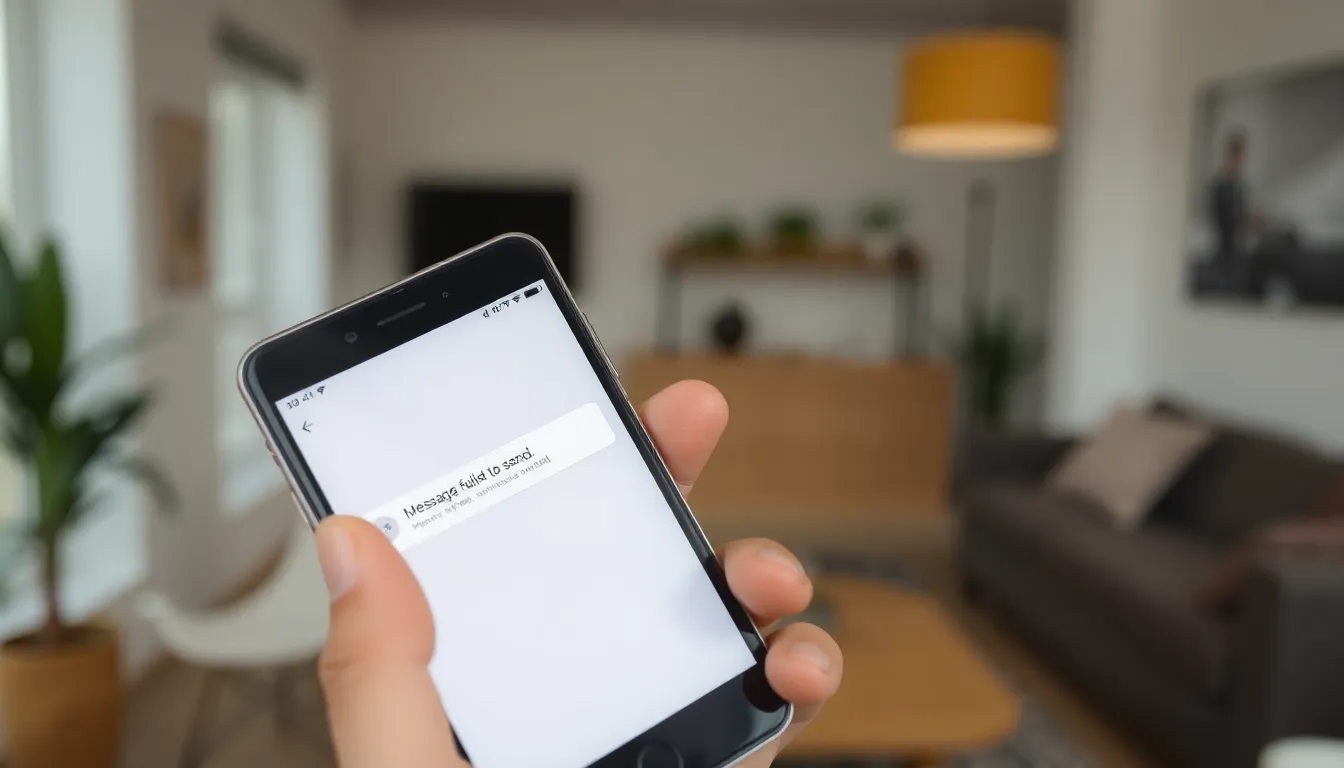Imagine this: you’re in the middle of an important conversation, fingers flying over your iPhone screen, and suddenly—boom! Message send failure. It’s like your phone just decided to play hard to get. Frustrating, right?
This pesky issue can turn even the most patient person into a tech detective. So why does it happen? The reasons can range from a weak connection to settings that seem to have a mind of their own. Understanding these quirks can save anyone from the dreaded “message not delivered” panic.
Get ready to dive into the world of iPhone message failures and discover why your messages sometimes take a detour. With a bit of insight, those pesky hiccups can become a thing of the past.
Table of Contents
ToggleCommon Causes of Message Send Failure on iPhone
Message send failures on iPhone occur for several reasons. Identifying these issues can significantly enhance messaging reliability.
Network Issues
A poor cellular network can disrupt message sending abilities. Users often experience failures in areas with weak signals or during peak usage times. Wi-Fi connections can also cause problems if they’re unstable or congested. Checking the network status frequently ensures better delivery rates. Switching from Wi-Fi to cellular data may resolve issues promptly.
Software Glitches
Software glitches sometimes lead to message send failures. System updates or app crashes can affect messaging capabilities. Restarting the iPhone can resolve temporary glitches effectively. Maintaining updated software ensures access to the latest fixes and improvements. Regularly clearing the messaging app’s cache may also enhance performance and functionality.
Troubleshooting Steps

Message send failures often frustrate iPhone users. The following troubleshooting steps can help resolve these issues effectively.
Restarting Your Device
Restarting an iPhone frequently fixes numerous glitches. It clears temporary files and refreshes system resources. To restart, press and hold the side button along with the volume button until the slider appears. Slide to power off, then wait a few moments before turning it back on. Performing this simple action often restores messaging capabilities, allowing users to send messages without interruptions.
Checking Network Settings
Checking network settings plays a critical role in resolving message send failures. Start by ensuring cellular data is turned on. Go to Settings, tap Cellular, and confirm Cellular Data is enabled. For Wi-Fi connections, confirm that the device is connected to a reliable network. Users can also toggle Airplane Mode on and off to reset the device’s connection. An unstable connection often leads to delays, so verifying these settings can significantly enhance messaging performance.
Preventive Measures
Taking steps to prevent message send failures on an iPhone can enhance the overall messaging experience. Implementing a few proactive strategies often results in fewer disruptions.
Keeping iOS Updated
Updating iOS regularly ensures optimal performance. Apple frequently releases updates that resolve bugs and enhance system stability. Checking for software updates every few weeks minimizes potential issues related to outdated software. Users can go to Settings, select General, then tap Software Update to see if a new version is available. Staying current with iOS not only improves messaging functionality but also enhances security.
Regularly Managing Storage
Managing storage space is crucial for seamless messaging. Insufficient storage may lead to delays or failures in sending messages. Users should periodically check available storage by going to Settings, then tapping General and iPhone Storage. Deleting unused apps, old messages, and large attachments frees up space. Maintaining adequate storage generally supports the effective operation of messaging apps, reducing the likelihood of message send failures.
When to Seek Professional Help
Persistent message send failures may indicate deeper issues with the iPhone. If basic troubleshooting steps such as restarting the device or checking network connections fail, it may be time to consider professional assistance. An expert can diagnose software problems that typical users might not identify.
Repeated failures to send messages in various apps could suggest hardware malfunctions as well. If physical damage or water exposure occurred, seeking help quickly prevents further damage. Professionals possess the tools to assess and repair hardware issues effectively.
When system updates don’t resolve the problem, connecting with Apple Support can provide insights into unresolved software glitches. Apple technicians are equipped to handle intricate system configurations. They can provide guidance on restoring settings to default, which may resolve lingering issues.
Additionally, if the messaging problem persists across multiple devices, the issue might relate to the user’s network instead of the iPhone. Verification of network settings and configurations often helps determine whether it’s an isolated device issue or a broader service problem. In such cases, professional network services can identify and rectify service provider issues.
Finally, users should consider professional help if feeling overwhelmed by the troubleshooting process. Trusting experts ensures they receive accurate evaluations and necessary solutions. It’s advisable to address persistent issues quickly to maintain optimal device performance and communication reliability.
Message send failures on an iPhone can be frustrating but understanding their causes can alleviate some of the stress. By identifying potential issues like network instability or software glitches users can take proactive steps to enhance their messaging experience. Regularly updating software and managing device storage are simple yet effective ways to prevent these problems.
For persistent issues that basic troubleshooting can’t resolve seeking professional help can provide valuable insights and solutions. By staying informed and taking action users can ensure reliable communication and minimize disruptions in their messaging.




